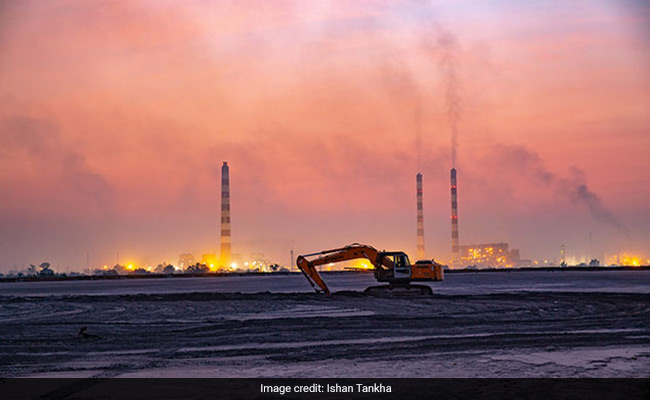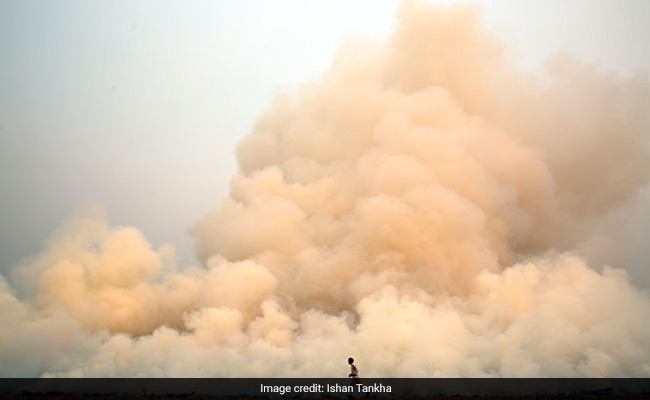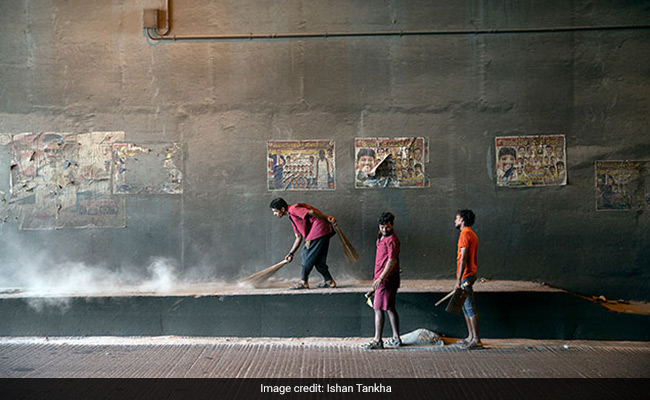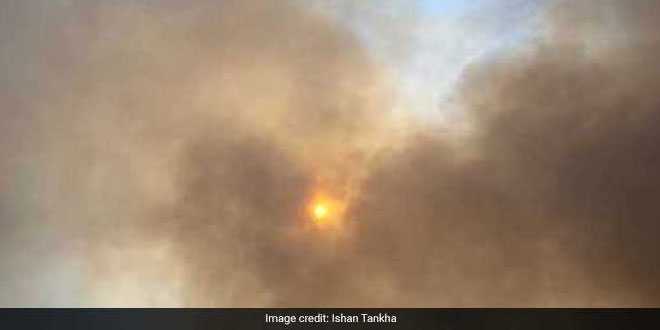New Delhi: They say, the first step to solving any problem is acknowledging that we have a problem. While there are multiple national and international studies reiterating the toll air pollution is taking on the health of the people across the country and every year the smog crisis in north India is a grim reminder of the crisis, but a lasting solution to this problem stills remains elusive. To provide a reality-check to the people and show that pollution is not limited to only Delhi and other major cities of India, journalists Aruna Chandrashekhar and photographer Ishan Tankha decided to document the nation-wide crisis through pictures. After travelling to different parts of the country, capturing stories and images, the duo, on World Environment Day (June 5) exhibited their work at Bikaner House Gallery, in New Delhi as a part of a project called ‘Breathless: Documenting India’s Air Emergency’.

With eight power plants in a 10 km radius and some of the country’s biggest coal mines, Korba is a district in Chhattisgarh that keep India’s lights on. In 2009, it was ranked India’s fifth most polluted industrial cluster. The state still doesn’t have a single, real-time air quality monitor recording pollution data in the public domain
Talking to NDTV about the project, Aruna said,
We hope to humanise what seems like an amorphous, seasonal and regional problem to many. The project aims to tell stories that help connect cities to the heartland India and sources of pollution, while introducing the audience to ordinary people, fighting extraordinary pollution.
From coal mines of Korba in Chhattisgarh to Aarey in Mumbai and Ennore in Chennai, the exhibit showcases stories of people suffering severe health impacts due to the state of poor air quality across the country, and demand that government must declare air pollution a national public health emergency in India.

A farmer sets his crop residue ablaze. Farmers have their hands tied, as early-maturing seeds and affordable equipment are yet to make their way to them in time
Aruna, who has been capturing environmental issues and working towards finding solutions to these, for last eight years, believes that being passive about the problem of air pollution is no longer an option. She said,
Our government continues to weaken environmental protection laws citing development. Forests are being swept off because of infrastructural projects. Activities like mining are damaging our ecosystem beyond explanation. We are so concerned about ‘ease of doing business’ in the country but can we talk about ‘ease of breathing’, please?

A plume of smoke rises above paddy fields in Punjab. Farmers are tired of taking the blame for Delhi’s pollution, with no viable alternative to stubble burning
Also Read: We Are Not Taking Air Pollution Menace Seriously: National Green Tribunal Chairman
Aruna believes that there’s a lack of empathy among most people who can afford to cocoon themselves from the ill-effects of pollution to some extent. She said,
Most of us, especially the youngsters have access to information and are aware of the crisis, yet we prefer to live in a bubble. We would comfortably order in food and are happy to let someone else face the pollution to get it to us for just a small sum of money.

Bangalore’s contract sanitation workers sweep Electronic City’s streets without a mask, gloves or medical aid. Many of them have not been paid for months
The exhibition which ended on June 9 is supported by Clean Air Collective, a group of organisations working on the issue of air pollution. Ravina Kohli of ‘My Right To Breathe’ movement who has been fighting for clean air extensively on national and international platforms shared with NDTV that the exhibition highlights the stark reality that people with lower means are the most affected by this health and environmental crisis. She said,
This is a first of its kind exhibition that transcends all language and class barriers. It brings home the harsh point visually that pollution affects everyone through the country. It shows that the time for debate and denial is over. The time to act with grave concern is now. Air pollution requires aggressive intervention, not lazy policies. Only a collective, collaborative and cohesive approach will work with public consultation and support. This is everyone’s problem.
How Grave Is The Problem Of Air Pollution?
State of Global Air 2019 report by Health Effects Institute stated that South Asia was the most polluted hotspots in the world, leading to an average reduction in lifespan due to air pollution by 30 months, while the global average remains 20 months.

A woman inspecting her husband Atul’s x-rays. She had to show his reports to six doctors before she found out her husband, a non-smoker, had lung cancer
According to a study conducted by the Lung Care Foundation, a non-government organization based in Delhi, the effects of air pollution are so drastic that lung cancer has seen an increase of 50 per cent among non-smokers in the last 30 years in India. There are numerous other studies that show an increase in various diseases like chronic bronchitis, heart diseases, strokes, vertigo, Alzheimer in the past few years because of the rise in air pollution.
NDTV – Dettol Banega Swachh India campaign lends support to the Government of India’s Swachh Bharat Mission (SBM). Helmed by Campaign Ambassador Amitabh Bachchan, the campaign aims to spread awareness about hygiene and sanitation, the importance of building toilets and making India open defecation free (ODF) by October 2019, a target set by Prime Minister Narendra Modi, when he launched Swachh Bharat Abhiyan in 2014. Over the years, the campaign has widened its scope to cover issues like air pollution, waste management, plastic ban, manual scavenging and menstrual hygiene. The campaign has also focused extensively on marine pollution, clean Ganga Project and rejuvenation of Yamuna, two of India’s major river bodies.






























